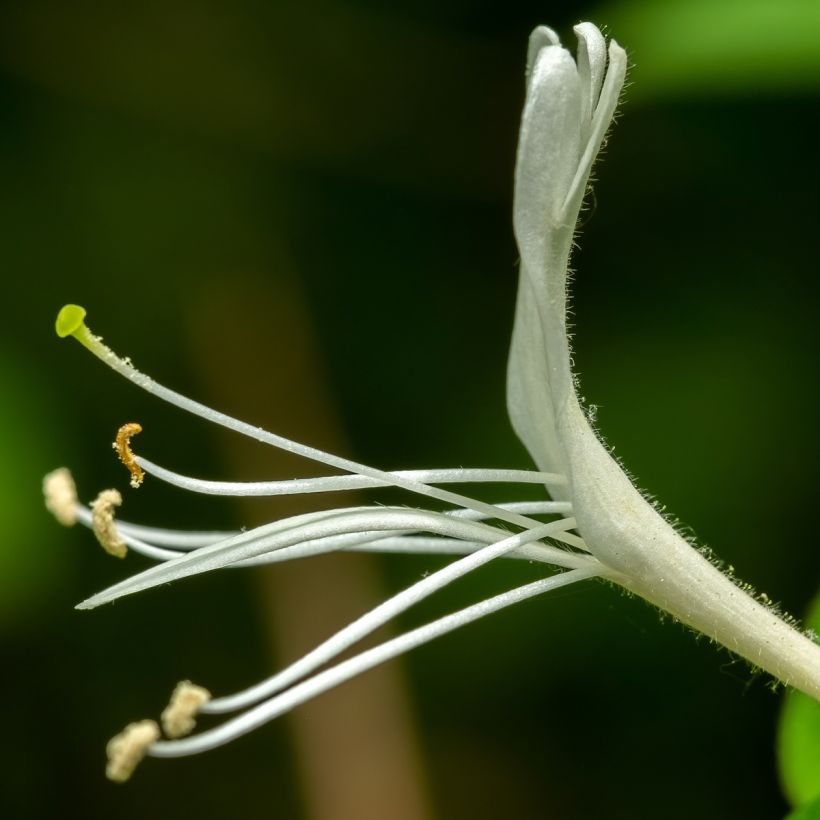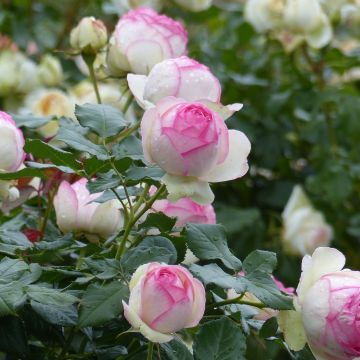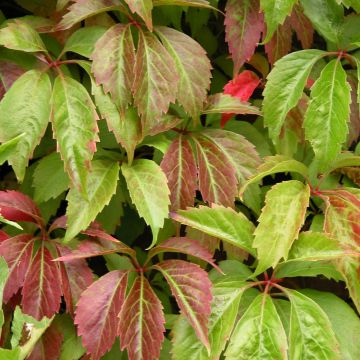

Lonicera japonica Dart's Acumen


Lonicera japonica Dart's Acumen


Lonicera japonica Dart's Acumen


Lonicera japonica Dart's Acumen
Lonicera japonica Dart's Acumen
Lonicera japonica Dart's Acumen
Japanese Honeysuckle
Plant received in impeccable condition. Planted in the garden, it is already well established. Very satisfied with the product.
Helene, 09/03/2023
Special offer!
Receive a €20 voucher for any order over €90 (excluding delivery costs, credit notes, and plastic-free options)!
1- Add your favorite plants to your cart.
2- Once you have reached €90, confirm your order (you can even choose the delivery date!).
3- As soon as your order is shipped, you will receive an email containing your voucher code, valid for 3 months (90 days).
Your voucher is unique and can only be used once, for any order with a minimum value of €20, excluding delivery costs.
Can be combined with other current offers, non-divisible and non-refundable.
Home or relay delivery (depending on size and destination)
Schedule delivery date,
and select date in basket
This plant carries a 6 months recovery warranty
More information
We guarantee the quality of our plants for a full growing cycle, and will replace at our expense any plant that fails to recover under normal climatic and planting conditions.
Would this plant suit my garden?
Set up your Plantfit profile →
Description
The Lonicera japonica Dart's Acumen is a variety of Japanese Honeysuckle that is very accommodating and easy to grow. Its highly fragrant white-yellow flowering during several months is a delight to the senses on long summer evenings. Its beautiful dark green foliage persists throughout the seasons to varying degrees depending on the severity of winter. This superb climbing variety quickly fills any support available, whether it be a tree, pole, pergola, or fence, without requiring much maintenance or special skills. An ideal plant for beginners!
Honeysuckles are woody plants of the Caprifoliaceae family, which also includes snowberries, well-known for their pretty berries, or the Himalayan Honeysuckle, less common in gardens, and its beautiful flowering followed by curious decorative fruits. The Lonicera genus includes both climbing vines, like the Lonicera japonica, or our native L. periclymenum, as well as bushes (L. maackii, L. nitida, or the precious L. fragrantissima with fragrant winter flowers). The Japanese Honeysuckle is a botanical species native to East Asia (China, Korea, Japan). It can be found in thickets, rocky areas, along the edges of woodlands, and by roadsides. In France, it has naturalized, mainly in the South and West, where it invades hedges. In the wild, this plant shows vigorous growth (up to 10 m (33ft)) that is best suited for larger, somewhat wild spaces.
The 'Dart's Acumen' variety is a more reasonable choice for our gardens, as it will reach approximately 6 m (20ft) in height and 3 m (10ft) in width, despite its rapid growth. Its voluble stems wrap around any available support: fences, trellises, tree branches. They can also effectively cover the ground, as their dense and semi-evergreen foliage (even evergreen in mild climates) leaves little chance for unwanted weeds to grow underneath. The simple leaves, not fused at the base, are oval and acuminate (pointed at their tips), arranged opposite each other. They maintain their beautiful dark green colour throughout the season and provide a true setting for the light, white to yellow flowers. These flowers are the main attraction of this plant, not only for their own beauty, but especially for their fragrance. Tubular, bilabiate, and with protruding stamens, they have a particularly aesthetic delicate appearance. Appearing throughout the summer, from late June to September, they emit a powerful fragrance recognizable from meters away, especially on warm summer evenings, delighting pollinating insects. They are followed by inedible black fruits.
Hardy down to -15°C (5°F) without any problems, this Lonicera thrives in all types of soil, from neutral to acidic or limestone. Its only requirement is that the soil remains moist in summer while being well-drained in winter. It thrives in full sun as well as partial shade, which ultimately means it can find its place in any garden!
Valuable for concealing any unsightly support, from poorly placed poles to old sheds, this remarkable 'Dart's Acumen' honeysuckle can also conquer a tree, a usage still not widely practiced in France despite its great decorative interest. Indeed, there is nothing better to give a wild and natural touch to a garden! It can be paired with other vigorous climbers that can withstand its competition, such as the wonderful Clematis 'Mayleen' with its fragrant pink flowers in May, which will precede the flowering of the honeysuckle. In the presence of such a powerful fragrance, it is advisable to avoid planting another climber with a strong summer fragrance nearby (such as the Star Jasmine), as it is better to opt for spreading rather than confrontation. Among wisterias, there is a low-growing variety that will not suffocate the honeysuckle and whose flowering begins earlier; it is Wisteria venusta, a little-known romantic Japanese wisteria with short and charming clusters (white or pink, depending on the variety).
Lonicera japonica Dart's Acumen in pictures




Plant habit
Flowering
Foliage
Botanical data
Lonicera
japonica
Dart's Acumen
Caprifoliaceae
Japanese Honeysuckle
Cultivar or hybrid
Other Honeysuckle
View all →Planting and care
The Lonicera japonica 'Dart's Acumen' can be planted in autumn or spring. It thrives in any good deep garden soil, preferably rich and moist, and tolerates limestone well. The first summers should be watered, especially if the soil tends to dry out. In this case, it is welcome to mulch to maintain sufficient moisture at the roots.
Prefer a sunny exposure to promote flowering, but not scorching. A semi-shaded position will also suit it, especially if the sun is intense in your region.
Practice annual pruning to maintain an orderly shape. Do this in early winter to not compromise flowering, which occurs on the wood of the year. However, it is possible to severely cut back an older subject to completely renew its structure, if it has a lot of dead wood.
Honeysuckles are very hardy climbing plants ideal for quickly dressing up a wall or pergola. Provide them with support, they will cling on their own. We love them for their long flowering period and wonderful fragrance. Our advice: Plant them near your terrace, or close to a window, to fully enjoy their intoxicating scent that intensifies in the morning and evening.
Planting period
Intended location
Care
Planting & care advice
-
, onOrder confirmed
Reply from on Promesse de fleurs
Similar products
Haven't found what you were looking for?
Hardiness is the lowest winter temperature a plant can endure without suffering serious damage or even dying. However, hardiness is affected by location (a sheltered area, such as a patio), protection (winter cover) and soil type (hardiness is improved by well-drained soil).

Photo Sharing Terms & Conditions
In order to encourage gardeners to interact and share their experiences, Promesse de fleurs offers various media enabling content to be uploaded onto its Site - in particular via the ‘Photo sharing’ module.
The User agrees to refrain from:
- Posting any content that is illegal, prejudicial, insulting, racist, inciteful to hatred, revisionist, contrary to public decency, that infringes on privacy or on the privacy rights of third parties, in particular the publicity rights of persons and goods, intellectual property rights, or the right to privacy.
- Submitting content on behalf of a third party;
- Impersonate the identity of a third party and/or publish any personal information about a third party;
In general, the User undertakes to refrain from any unethical behaviour.
All Content (in particular text, comments, files, images, photos, videos, creative works, etc.), which may be subject to property or intellectual property rights, image or other private rights, shall remain the property of the User, subject to the limited rights granted by the terms of the licence granted by Promesse de fleurs as stated below. Users are at liberty to publish or not to publish such Content on the Site, notably via the ‘Photo Sharing’ facility, and accept that this Content shall be made public and freely accessible, notably on the Internet.
Users further acknowledge, undertake to have ,and guarantee that they hold all necessary rights and permissions to publish such material on the Site, in particular with regard to the legislation in force pertaining to any privacy, property, intellectual property, image, or contractual rights, or rights of any other nature. By publishing such Content on the Site, Users acknowledge accepting full liability as publishers of the Content within the meaning of the law, and grant Promesse de fleurs, free of charge, an inclusive, worldwide licence for the said Content for the entire duration of its publication, including all reproduction, representation, up/downloading, displaying, performing, transmission, and storage rights.
Users also grant permission for their name to be linked to the Content and accept that this link may not always be made available.
By engaging in posting material, Users consent to their Content becoming automatically accessible on the Internet, in particular on other sites and/or blogs and/or web pages of the Promesse de fleurs site, including in particular social pages and the Promesse de fleurs catalogue.
Users may secure the removal of entrusted content free of charge by issuing a simple request via our contact form.
The flowering period indicated on our website applies to countries and regions located in USDA zone 8 (France, the United Kingdom, Ireland, the Netherlands, etc.)
It will vary according to where you live:
- In zones 9 to 10 (Italy, Spain, Greece, etc.), flowering will occur about 2 to 4 weeks earlier.
- In zones 6 to 7 (Germany, Poland, Slovenia, and lower mountainous regions), flowering will be delayed by 2 to 3 weeks.
- In zone 5 (Central Europe, Scandinavia), blooming will be delayed by 3 to 5 weeks.
In temperate climates, pruning of spring-flowering shrubs (forsythia, spireas, etc.) should be done just after flowering.
Pruning of summer-flowering shrubs (Indian Lilac, Perovskia, etc.) can be done in winter or spring.
In cold regions as well as with frost-sensitive plants, avoid pruning too early when severe frosts may still occur.
The planting period indicated on our website applies to countries and regions located in USDA zone 8 (France, United Kingdom, Ireland, Netherlands).
It will vary according to where you live:
- In Mediterranean zones (Marseille, Madrid, Milan, etc.), autumn and winter are the best planting periods.
- In continental zones (Strasbourg, Munich, Vienna, etc.), delay planting by 2 to 3 weeks in spring and bring it forward by 2 to 4 weeks in autumn.
- In mountainous regions (the Alps, Pyrenees, Carpathians, etc.), it is best to plant in late spring (May-June) or late summer (August-September).
The harvesting period indicated on our website applies to countries and regions in USDA zone 8 (France, England, Ireland, the Netherlands).
In colder areas (Scandinavia, Poland, Austria...) fruit and vegetable harvests are likely to be delayed by 3-4 weeks.
In warmer areas (Italy, Spain, Greece, etc.), harvesting will probably take place earlier, depending on weather conditions.
The sowing periods indicated on our website apply to countries and regions within USDA Zone 8 (France, UK, Ireland, Netherlands).
In colder areas (Scandinavia, Poland, Austria...), delay any outdoor sowing by 3-4 weeks, or sow under glass.
In warmer climes (Italy, Spain, Greece, etc.), bring outdoor sowing forward by a few weeks.



























































